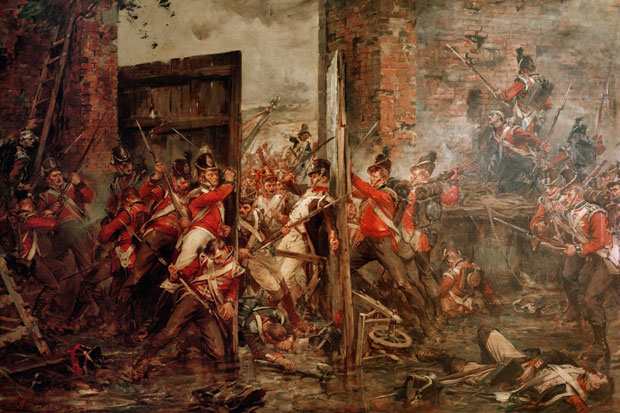The defence of Hougoumont is one of the great British feats of arms. If the farmhouse had fallen to Bonaparte’s forces during the battle of Waterloo, Napoleon’s 100 days would have become a French 100 years. But history has not been kind to Hougoumont; it fell into disuse as a farm at the end of the last century and has become increasingly dilapidated. Now, however, Hougoumont has an unlikely champion: the Chancellor of the Exchequer.
George Osborne first visited the site two years ago and was shocked by what he found. Souvenir hunters were simply removing bricks from the building. Osborne is a bit of a battlefield buff — he tries to visit a US Civil War site every time he goes to Washington for an International Monetary Fund meeting. He felt that something should be done, and started by looking to private philanthropy, writing to various companies urging them to donate to the restoration project.
But when Osborne heard that the crucifix had recently been stolen from the chapel in which the besieged soldiers had prayed, he decided that the rescue effort needed to be stepped up. The result: a government commitment to have the farmhouse restored in time for Waterloo’s bicentenary in June 2015.
At the site itself a different, less cynical, more passionate side to the Chancellor emerges. He seems thrilled when describing how the British fought back to shut the gates after the French had breached the farmhouse walls. He clambers around the site, trying to see the view that the guards defending the farmhouse had.
In this 24-hour media environment, front rank politicians need the ability to switch off. Osborne has clearly learnt that skill — during the afternoon, he produces histelephone only to photograph the battlefield and memorials.









Comments
Join the debate for just £1 a month
Be part of the conversation with other Spectator readers by getting your first three months for £3.
UNLOCK ACCESS Just £1 a monthAlready a subscriber? Log in